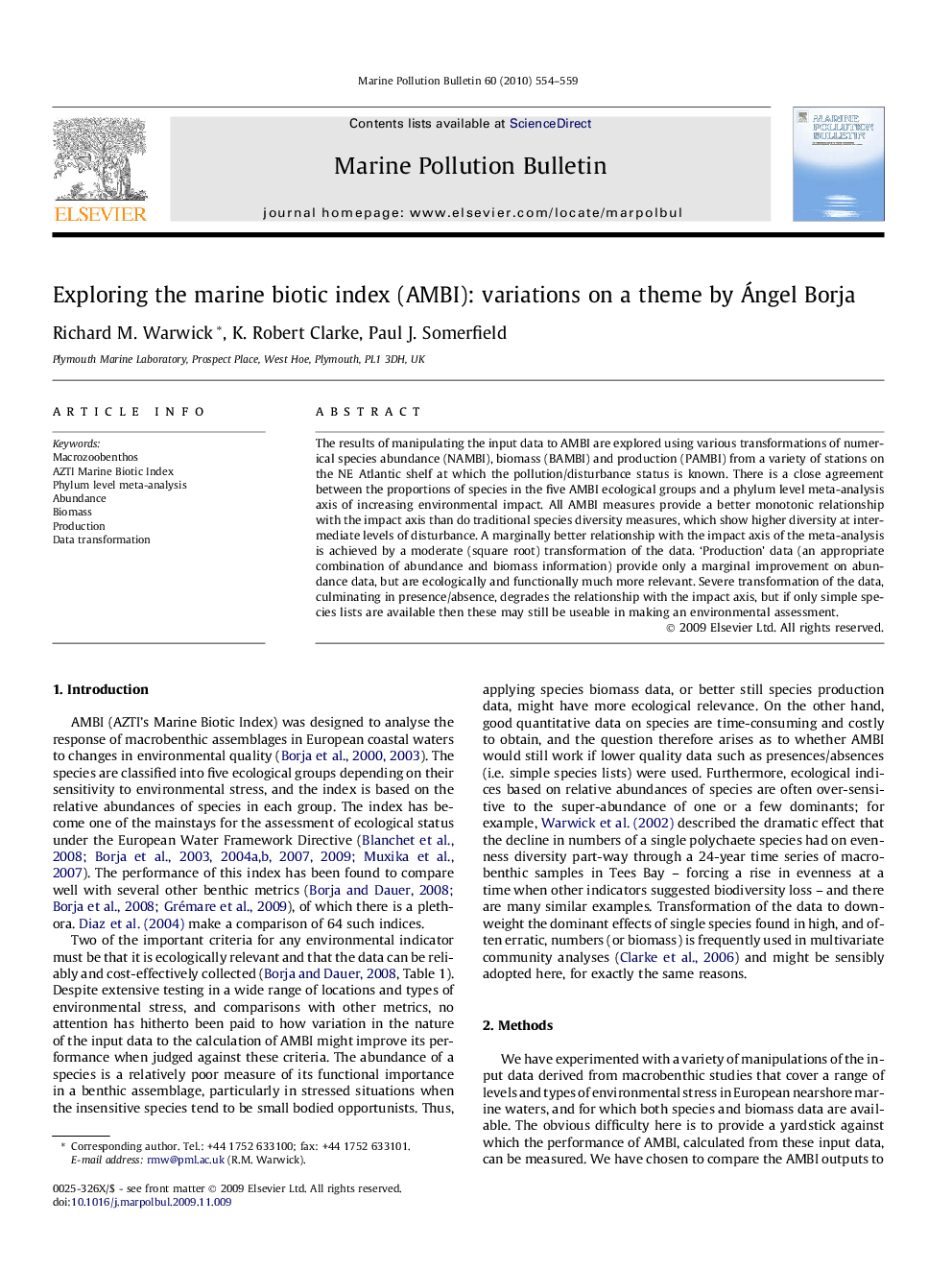| Article ID | Journal | Published Year | Pages | File Type |
|---|---|---|---|---|
| 6362658 | Marine Pollution Bulletin | 2010 | 6 Pages |
Abstract
The results of manipulating the input data to AMBI are explored using various transformations of numerical species abundance (NAMBI), biomass (BAMBI) and production (PAMBI) from a variety of stations on the NE Atlantic shelf at which the pollution/disturbance status is known. There is a close agreement between the proportions of species in the five AMBI ecological groups and a phylum level meta-analysis axis of increasing environmental impact. All AMBI measures provide a better monotonic relationship with the impact axis than do traditional species diversity measures, which show higher diversity at intermediate levels of disturbance. A marginally better relationship with the impact axis of the meta-analysis is achieved by a moderate (square root) transformation of the data. 'Production' data (an appropriate combination of abundance and biomass information) provide only a marginal improvement on abundance data, but are ecologically and functionally much more relevant. Severe transformation of the data, culminating in presence/absence, degrades the relationship with the impact axis, but if only simple species lists are available then these may still be useable in making an environmental assessment.
Related Topics
Physical Sciences and Engineering
Earth and Planetary Sciences
Oceanography
Authors
Richard M. Warwick, K. Robert Clarke, Paul J. Somerfield,
